A local (so-called) balanced trainer continues to spin reality in her posts every few weeks. And occasionally it’s something notable enough to comment upon.
This week we have the very serious (?) personal space issue with so-very-many dogs.
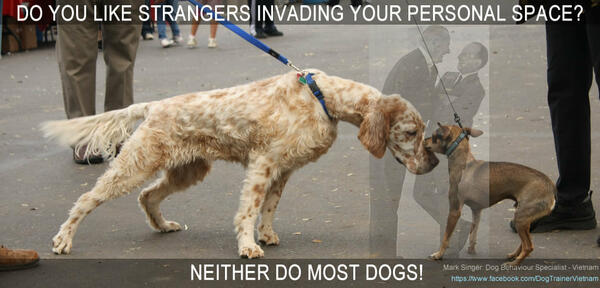
The Issue
Your personal space is YOUR personal space and your dog feels the same way. At K9 we teach you how to speak dog and how to read your dogs body language. If your dog is lunging, barking and snarling at strangers on a walk then its possible they are warning your to stay out of their space. If you enter their personal space then you are a threat and are subject to their threat. It is pretty straight forward. Come to packwalk this Sunday at 9 am and learn more about what your dog is telling you.
Elite K9 Corrales, Facebook 8-22-21
The New Dog
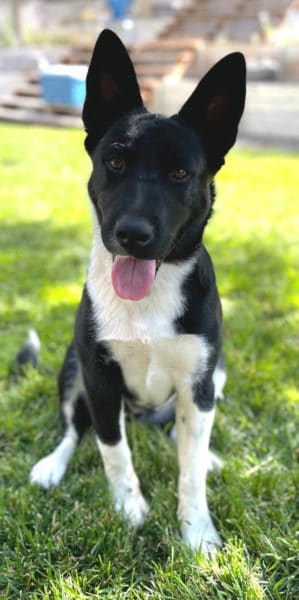
Yesterday, I introduced a 1-year old, newly adopted dog to other dogs at the dog park. She had already been introduced to my dog, where their reactions told me that she was ready for this. In the park I saw a half-dozen well-known dogs, all with good social skills. After the first greetings, Izzy was going around from dog to dog and person to person, saying hello to each of them.
From the heading image here, one can only imagine how many personal spaces she must have violated!
After some bouncing around, little Izzy settled down right next to Aurora, the 100# Malamute. Later, a pup her age entered, and the two of them had a wild date.
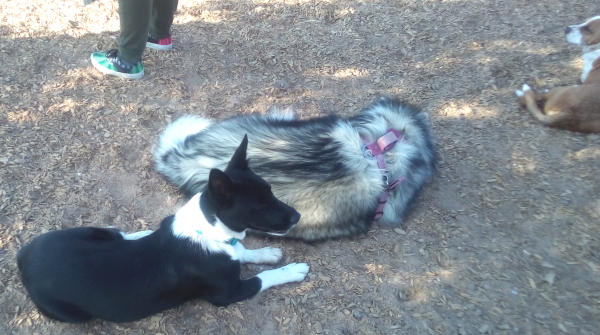
And, about their Personal Space?
Just as with people, dogs have social signals they use to guide another’s behavior. Not something they are born with, but skills learned from interacting with others. As Izzy bounced around, dogs calmly corrected her for being too intrusive, and she also did the same for a few of them. And everything was calm, peaceful, and just fine.
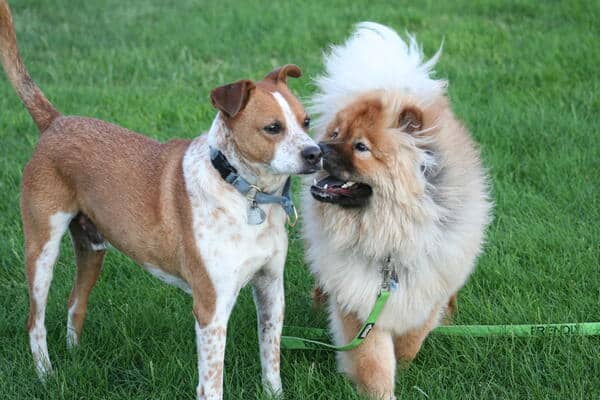
When the Chow Chow pup Poe comes over to see him, Bandi controls just how close she gets. The first time she was corrected, and now knows exactly how much she can get away with.
When first entering the dog park, most dogs either briefly tolerate others in their space, or rapidly just walk away. A social skill which takes a bit of time to learn, but that brief tolerance is easier for handling a group of dogs at once.

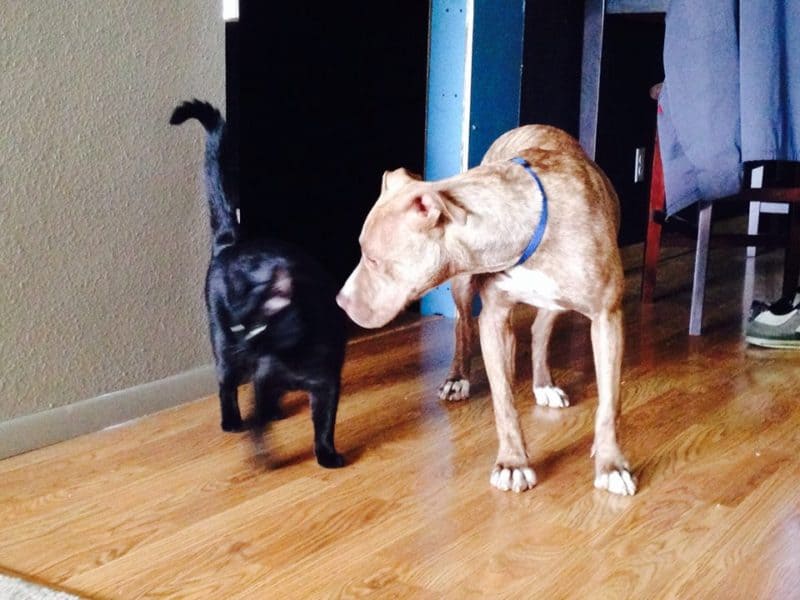
And cats have a somewhat different set of social signals for little Lulu to learn, but after being well socialized with dogs, she picked up on that in just a few days after being adopted.
And games have extended social signals. Here, the lady on the bottom is running the show. Each time she stops moving, the others slow down, then back away.
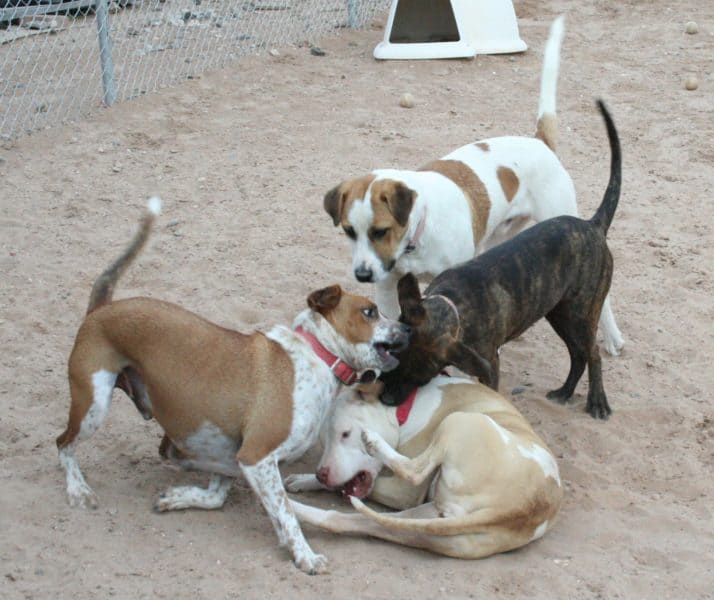
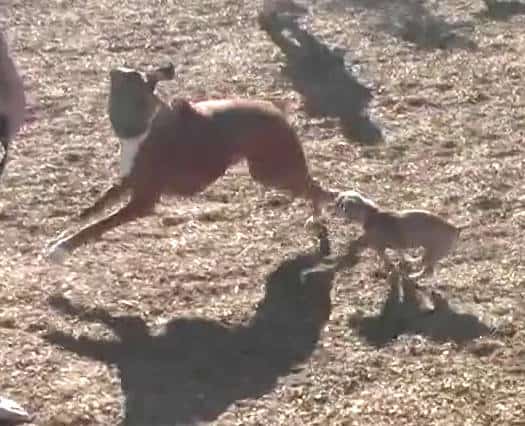
And as for very small dogs, here’s 4-year old and 5# Lulu the Chi, easily teaching some manners to a year-old Boxer. This is how social dogs handle things when people stay out of the way.
So, why the Concern?
Above, Elite K9 said: “If your dog is lunging, barking and snarling at strangers…”, and perhaps that’s the key here. If your dog isn’t interested or doesn’t like them, he would just ignore the strangers. That leaves just two cases here. Either he’s afraid of them approaching, or he’s very interested in them and excited, but afraid he won’t know what to do if they come closer.
But, all of those possibilities relate directly to social skills, or the lack thereof. Instead, Elite K9 seems to imply that other people and dogs are the ones at fault.
And the picture Elite shows at the top is about the worst way possible to introduce two dogs. Besides the difference in size, both of the leashes are held tight, restricting the dogs from movement. One of the key items in entering a dog park is to unleash the dogs first. Unless they were already good friends, I would never allow two dogs to meet on tight leashes.
And this is not just dogs, but people. At one Memorial Day Parade, my Bandi was tired of walking and went to work the crowd. He walked over to a parent and sat down, asking to see the kids. Then, he just laid down between them. He likes people but knows how to handle even young kids without issues.
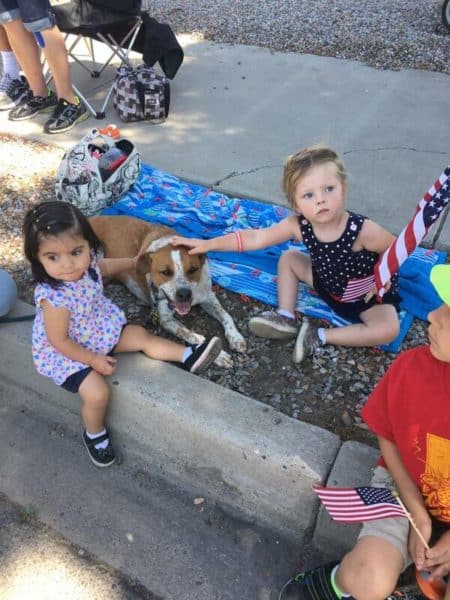
The Conclusion
Once again, this trainer appears to manage fear behaviors by just avoiding the situations, instead of teaching your dog the social skills to handle them. Even if those skills would then allow your dog a great deal more social contact and enjoyment from life.
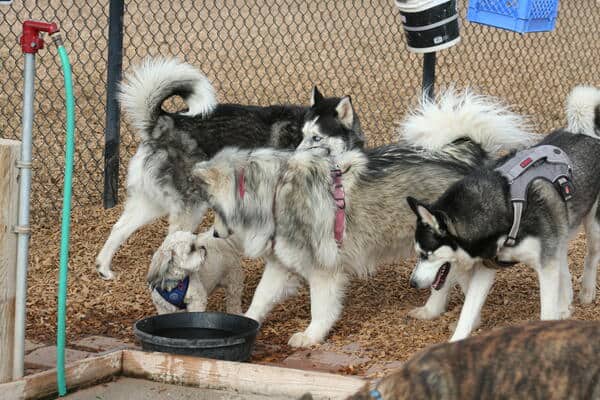
Together with this, I’ve seen so many people who are convinced their dogs are just too scared of people or other dogs, that they refuse to allow them to learn. Trainers like this are only making that bad problem a worse one.
